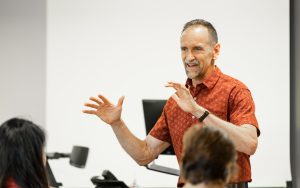Introduction

Welcome to the December 2021 edition of Food, Fiber, and Fashion Quarterly (vol. 3), a magazine devoted to exploring various aspects of products we commonly consume to clothe or nourish our bodies. As with previous issues, contributors here seek to reveal dimensions of consumerism that typically remain hidden to ordinary consumers. In the academic discipline of economics, this lack of knowledge on the consumers’ part creates an imbalance of information between seller and buyer called information asymmetry. Writ large, the economists tell us, the uneven distribution of information can lead to power imbalances and market difficulties among economic systems. For ordinary consumers, information asymmetry can lead us unwittingly to support industries whose products, production functions, or business models wreak havoc on the environment, employees of the industry, our health, or society more generally. Information asymmetry can also mean purchasing products that purport to solve a particular problem but end up causing other, equally problematic situations even as they solve the original problem. Finally, consumers’ lack of knowledge can lead to purchasing products that seem to be a good deal, but in the end, fail to deliver on their promises.
To ease your reading experience, we have grouped articles by topic:
In the first section, How Does Farming Affect the Environment?, authors consider the very harmful effects of producing ordinary consumables such as water, milk, and foods made of crops grown in monoculture environments such as corn and soy. Perhaps we need to rethink the choices we make about foods and beverages that are so common we never gave them a second thought.
In What Is In Your Food? seminar participants invite us to consider the additives common to so many processed foods (“natural and artificial flavors”) as well as the chemical additives in conventional wine. Do we really want to put those substances in our bodies? Food labeling is one way to know more about what we are consuming, but do most consumers even read them?
Where Does It All Go? asks us to reflect on the tremendous environmental impact of plastic food packaging and food waste. Each author here presents partial solutions to the problem, demonstrating that tackling food and food packaging waste must be addressed with a multi-pronged effort.
In the final section, What About Clothing?, writers scrutinize the unsustainability of clothing production and consumption as it is currently practiced in the United States. As with the topic of food waste, the authors look at some alternatives to recycle clothing or to produce and sell more sustainable and ethically sourced garments. Yet, these solutions alone are also inadequate for solving the problem; solving the environmental problems associated with textile waste will also require several approaches.
We are all unavoidably consumers in a complex, globalized world, and we cannot hope to know all things about everything we buy. Still, we hope our magazine will shed some light on a few consumables and help guide your purchasing decisions as a consumer, for we believe that informed consumers are a step in the right direction of building a healthier, happier, more sustainable world for all.
~Eric Metzler and Perspectives on American Consumerism seminar participants
